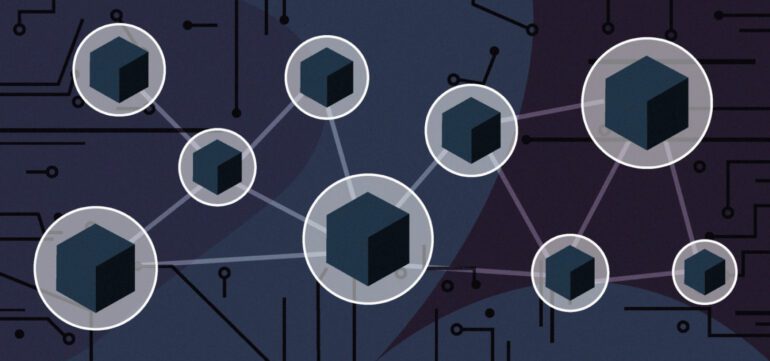TL;DR:
- DAG Protocol is revolutionizing data management in AI and ML.
- It introduces a branching structure for efficient data handling.
- Offers parallel data transfers, reducing latency and improving efficiency.
- Enhances scalability, allowing AI algorithms to handle larger datasets.
- Ensures data integrity with a robust versioning system.
- Accelerates algorithm development by leveraging parallelism.
- Strengthens security through decentralization and encryption.
- Ideal for real-time data analysis in AI applications.
Main AI News:
In today’s dynamic landscape of artificial intelligence (AI) and machine learning (ML), the pulse of progress beats to the rhythm of data. Efficient data exchange and processing are the lifeblood of innovation in these domains. Enter the Direct Acyclic Graph (DAG) Protocol, a revolutionary solution embraced by industry leaders like IOTA, Nano, and Hedera. It promises to reshape data transfer and algorithm development, catalyzing a transformative era in AI and ML.
The Essence of DAG Protocol
The DAG Protocol introduces an avant-garde approach to data management, departing from the conventional linear and cyclical structures. Instead, it unfolds as a branching marvel. This ingenious architecture allows data elements or nodes to connect without forming loops, perfectly tailored for the complexities of AI and ML applications.
As we delve deeper into this game-changing technology, we will explore its theoretical prowess in optimizing data transfer, enhancing scalability, ensuring data integrity, and revolutionizing algorithm development while addressing critical security concerns.
Streamlining Data Transfer: The Need for Speed
In the whirlwind realm of AI and ML, the DAG Protocol offers a competitive edge – efficient data transfer. Conventional systems follow linear data pathways, resulting in congestion and operational bottlenecks. The DAG Protocol introduces parallel transfers, slashing latency and turbocharging data movement between network nodes.
For instance, Ethereum’s traditional systems handle up to 15 transactions per second (TPS). In stark contrast, the DAG Protocol flexes its muscles with a capacity of approximately 1,000 TPS, heralding a new era of data transfer efficiency.
Scalability and Parallel Prowess: Meeting the Demand
AI and ML’s voracious appetite for computational resources is insatiable. This is where the DAG Protocol truly shines—parallelism. Its innate capability to distribute data across multiple nodes or processors enhances scalability to unprecedented levels.
This newfound scalability empowers AI algorithms to tackle vast datasets and intricate computations with unparalleled speed and precision. The DAG Protocol’s scalability potential becomes an invaluable asset in meeting the ever-expanding needs of AI and ML applications, where processing immense data volumes is par for the course.
Data Integrity and Version Control: Trust in AI Models
In AI and ML, data integrity is the bedrock of success. Even minor data discrepancies can derail model development. The DAG Protocol’s structural elegance provides an unassailable foundation for data versioning.
Each new data segment becomes irrevocably linked to its predecessors, forming an immutable record of changes. This not only enhances data traceability but also erects formidable barriers against data tampering.
In cases of data anomalies, the DAG Protocol’s versioning system simplifies identification and correction, ensuring that AI models operate with pristine and dependable inputs.
Elevated Algorithmic Possibilities: Unleashing Innovation
The DAG Protocol’s influence on algorithm development within AI and ML is profound. Traditional algorithms often succumb to sequential processing limitations, stifling their potential to harness distributed computational resources. Algorithms imbued with DAG awareness can fully exploit parallelism’s potential.
Consequently, training times accelerate, and model updates become more efficient. AI and ML practitioners can iterate and enhance their models at an unprecedented pace, propelling progress and innovation in these fields.
Decentralization and Cybersecurity: Safeguarding Data in an Interconnected World
In today’s AI and ML landscape, data privacy and security are paramount concerns. The DAG Protocol’s decentralized nature strengthens security by reducing vulnerability to cyberattacks that plague centralized data repositories.
Moreover, the DAG Protocol incorporates robust data encryption within its structure, safeguarding sensitive information. This dual-layered security approach is instrumental in protecting data in a world where IoT devices and AI systems interconnect at an ever-increasing pace.
Real-Time Data Analysis: Informed Decision-Making
AI and ML frequently demand real-time data analysis for informed decision-making. The DAG Protocol’s proficiency in data transfer and processing positions it as the ideal choice for applications like autonomous vehicles, predictive maintenance, and fraud detection.
With its swift and efficient data processing capabilities, the DAG Protocol empowers organizations to harness the power of real-time data analysis, enabling critical decisions with unwavering confidence.
Final Reflections and Forward Horizons
The potential of the DAG Protocol in AI and ML is monumental, and its adoption is on an upward trajectory. Continuous research and development will uncover innovative use cases, expanding the boundaries of what can be achieved.
As we march forward, it is our duty to vigilantly monitor the evolving landscape of this groundbreaking technology, as it is destined to be a pivotal force in shaping the future of AI and ML. The data and statistics underscore the transformative power of the DAG Protocol, propelling the evolution of data transfer and algorithmic advancements in these domains.
Conclusion:
The DAG Protocol represents a seismic shift in the AI and ML data management landscape. Its innovative features, including parallel data transfers, scalability, data integrity, and enhanced algorithm development, are poised to disrupt the market. With strengthened security and real-time data analysis capabilities, it’s positioned to drive significant advancements and shape the future of AI and ML. Businesses and organizations that embrace this technology stand to gain a competitive edge in this rapidly evolving field.

